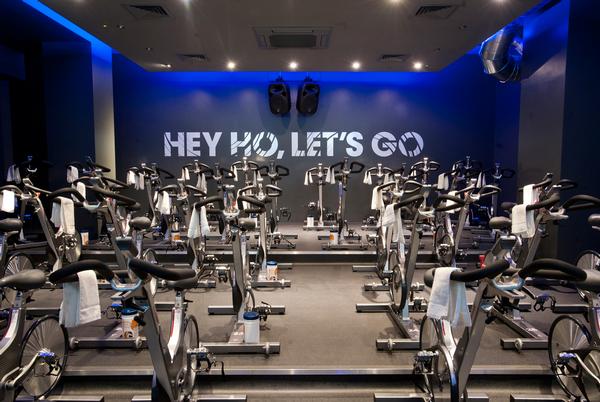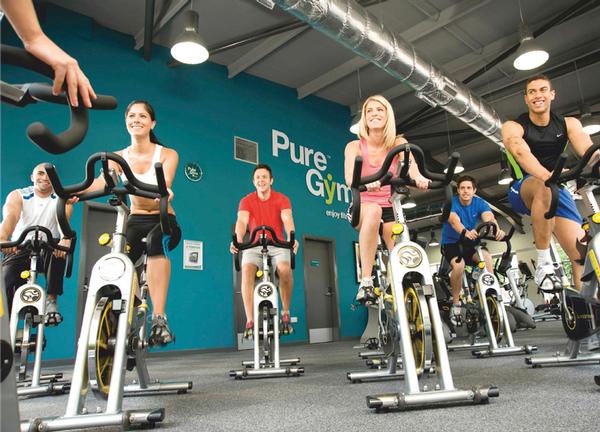 SELECTED
ISSUE
SELECTED
ISSUE
|
|
Leisure Management - State of play

Market analysis

|
|
| State of play
|

Where does the UK fitness sector currently sit within its product lifecycle, and what comes next? Kate Cracknell asks the experts for their thoughts
|

Are clubs now in direct competition with technology? photo: www.shutterstock.com/: lzf


Fitness First is investing in its product to ensure it remains relevant


The rapid number of entrants into the budget sector has fuelled competition


Operators need to be the lynchpin that connects the online space to the club www.shutterstock.com
|
|
|
Where does the health and fitness industry currently sit within its product lifecycle? After years of maintaining more or less the same level of population penetration, are there any signs of green shoots that mark a possible turning point for the sector – a point at which it will leave its plateau behind and grow once more? The product lifecycle theory states that there are four key phases in a product’s life. The introduction phase involves researching, developing and then launching the product. This is followed by the growth stage, when sales are increasing at their fastest rate. Maturity is characterised by sales being near their highest point, but with the rate of growth slowing down due to factors such as market saturation and higher levels of competition. Decline is the final stage of the cycle, when sales begin to fall, but this may be avoided if the product is revitalised through innovation; not all products will reach this stage. While different sectors of the UK fitness industry are at different stages of their lifecycle, the overall picture is of an industry in the stage of maturity: high levels of competition, with some viewing the market as already saturated, and overall population penetration rates holding steady. So what comes next? Do we decline, hold steady, or grow through reinvention? Some sectors of the fitness industry are already in a growth phase – budget clubs, for example, and the microgyms – but for now the overall sector holds steady. However, at the recent IHRSA European Congress, industry consultant Ray Algar explained how the sector had now lost its “temporary monopoly”, with competition arising not only in the form of other gyms but also from other fast-evolving sectors such as technology. And Christophe Andanson, stalwart of the fitness industry in France, warned that the health club model is genuinely at risk for the very same hi-tech reason. So might we actually hit the final stage of the cycle: decline? Or is there anything else that might fall in alongside the low-cost gyms and slingshot us into growth – the continuing emergence of the microgyms, new partnerships with organisations both in and outside of our sector, or perhaps harnessing the fast pace of technological innovation to help us move outside of bricks and mortar facilities altogether? Alternatively, will the sector simply opt for gentler reinvention to ensure it remains relevant – thus steering clear of decline – but remaining within the maturity phase? We ask the experts.
|
|
 |

Nigel Bland
Partner, corporate finance travel & leisure
Deloitte LLP |
 |
As far as the concept of health club membership goes, I believe there’s no product lifecycle in the classic sense: Romans had baths and Victorians had running clubs.
There may be a tech revolution that we can’t yet imagine, and there’s already a risk of substitution as technology impacts the market: almost two-thirds of adults now own smartphones, which has led to an increase in the number of health and fitness apps available, many of which don’t require the use of a health club. However, my guess would be that, in 2100, there will still be gyms with members – they will simply offer more advanced machines and classes.
The sector has also seen a new generation of specialist operators emerging that specifically concentrate on classes, such as Cyclebeat and Barry’s Bootcamp. These allow for a more flexible membership approach, with consumers only paying for classes attended.
However, although recently the budget operators have grown at the expense of the mid-market, I believe there’s room for everyone going forward if they provide a clear brand proposition, have the right locations and are value for money. Although the UK health club market is forecast to grow at a slow rate (around 1 per cent a year), I believe the established operators can re-group and begin to grow their businesses, for four key reasons.
Firstly, health and fitness is an established, mainstream market that’s here to stay, with many macro factors underpinning demand. Second, while the growth in memberships may be modest, the improving economy will allow membership pricing to increase, giving a much greater growth in the value and profitability of the sector.
Third, this is not retail, which is suffering long-term online substitution by online shopping. Operators can respond to technology innovations by incorporating them: DLL and Pure Gym among others have started to do this, creating mobile apps offering exercise programmes and dietary advice.
And finally, the sector was overbuilt in the 90s and the noughties, but capacity has gone out of the market through restructurings. In addition, with most balance sheets now much stronger, ongoing investment is being made (eg Fitness First) to keep the groups relevant and competitive.
But while there is a case for investors to re-engage, management will need to work hard to make those cases, as investors will be wary given the recent history of the established businesses.
| |


|

Specialist brands like Cyclebeat offer flexibility |
|
|
 |

Jacques de Bruin
COO
Pure Gym |
 |
Penetration rates across the UK health and fitness market will remain stable at their current levels, averaging between 12 and 13 per cent, for the foreseeable future.
The mid-level and high-end sectors of the market will remain fairly consistent in their current penetration levels, with the potential for a very slight decline in membership numbers as the budget operators continue to grow over the next 12 to 24 months. Any decline will be minimal, though, with the businesses operating in these sectors offloading the poorest performing clubs and consolidating into fewer, but more profitable, clubs.
The major shift within the industry will be the number of operators within the budget sector of the market. Lower financial outputs and operating costs have reduced barriers for entry into the affordable sector, which in turn has rapidly increased the number of operators within this sector – and consequently competition levels.
With expected overall market penetration levels remaining stable, the affordable sector cannot sustain the continued growth across different operators for a long-term period. The next 12 to 24 months will be a critical time for budget operators as the affordable sector begins to consolidate.
During this consolidation stage, business success within the affordable sector will be determined by two factors: differentiation through innovation, and the successful entry into new markets and locations, specifically London.
Budget operators who correctly identify the changes in consumer demand and strategically tailor a business model to meet more niche requirements, while still following a budget operating model, will continue to expand their membership base by creating a new market for the affordable sector to operate in. Crucial to this success is early entry into new market opportunities. Microgyms that meet consumer demands are central to this niche offering, as they will allow financially viable diversification into markets that have no affordable operator presence.
| |


|

The next 12–24 months could see consolidation within the affordable sector |
|
|
 |

Martin Seibold
MD
Fitness First UK |
 |
To better understand the market, we need to differentiate between fitness and gyms. Fitness in the UK is still in a growth phase, but the traditional gym concept is at risk of saturation, with more and more new chains and clubs popping up all the time.
The majority of these clubs, however, tend to look the same – just boxes full of equipment – so all have similar offerings, just in different price brackets. Club operators face a choice: to continue this trend or make a change. It’s through embracing change that individual operators will be able to take advantage of the growth phase fitness finds itself in and grow themselves.?The challenge is how to re-invent the model and create an offer that goes beyond the traditional gym. Create a product, a proposition and a way of dealing with people on their own terms, and create new trends inside and outside of the gym to engage and excite people into fitness.
There’s a huge opportunity to get a fresh breeze into the industry by joining all the dots and truly understanding consumer needs rather than competing over price. Fitness overall is still quite a young sector. We have an ageing population, growing knowledge about the benefits of exercise, and activity high on the government agenda. So we know that more people than ever want to get active, maintain their health and feel happy and confident. New insights can unveil the key to maintaining, and indeed growing, the appeal of and the demand for the industry. A better understanding of the consumer enables us to offer products and services on their terms. This can come in various forms, whether it’s new partnerships, an integrated digital experience or exclusive in-club programmes and services.
Most importantly, it’s about the connection with members. Understanding true needs and being more agile in addressing them, as well as setting the trends, is the key to building stronger relationships for a flourishing future, adding to the ‘traditional’ gym and enabling the industry to grow far beyond a 12–13 per cent penetration.
| |


|

While the gym concept is at risk of saturation, ‘fitness’ is still a young sector |
|
|
 |

Neil Harmsworth
Co-founder
PayasUgym.com |
 |
There’s little doubt that the fitness industry has occupied the ‘mature’ phase of the product lifecycle for some time – a period during which market share has been won and lost by individual operators, but overall market value has hardly changed. At the same time, however, the demands of our customers have evolved more rapidly than at any time in the previous 20 years.
This is great news for the sector, as it represents a real opportunity for innovative operators to develop effective extension strategies and deliver genuine market growth. But to achieve that, more must be done to understand and influence the factors that will drive that growth.
At PayasUgym.com, we’ve been working to understand what these factors may be, and our analysis repeatedly shows that the two biggest factors that genuinely influence the decision-making process of a potential customer remain price and convenience of location, in that order.
On that basis, it’s easy to see why the budget sector has grown so rapidly through a strategy of modest price points and intense competition for prime locations. It’s also encouraging to see just how many operators have started to embrace technology in order to minimise costs for the customer, and to reach them regardless of their location. This can be delivered through something as simple as improving website user experience, or the integration of expensive wearable devices.
These factors also explain the rise of ‘single experience’ venues, which focus on being famous for one thing rather than average at a lot. These venues require less space and can therefore be innovative with the locations they select. By focusing on one activity, they also minimise wastage and reduce costs for the customer.
Price and convenience of location will be the factors that grow our industry once again, with winners and losers emerging over the coming years based on the willingness and ability of operators to recognise and influence these growth factors.
|
|
 |

Arthur McColl
COO
LA fitness |
 |
I often compare health clubs to the hotel sector, where the landscape has changed over the past 15 years, with an emerging low-cost market including brands such as Days Inn. Mid-market has turned into ‘midscale’ and ‘upper midscale’ in order to differentiate, and the boutique and luxury market has prospered.
A key difference for the health club sector is the emergence of technology. Nearly 75 per cent of regular exercisers use technology in their workouts, and 69 per cent of participants in the US are now self-tracking. That makes it hardly surprising that there was an expected growth of 25 per cent in the fitness tech market in 2014.
Member experience is key. In a consumer-focused, technology-savvy world, we can no longer rely on traditional routes to consumption. We need programmes and interaction to engage, educate and motivate our members. These need to be convenient, fun and motivational to get the disengaged active, fit and healthy. The emergence of microgyms, albeit gradual, embraces the changing requirements of the consumer for more convenient, personalised, social interactions. We must adopt these principles and offer the ‘microgym’ experience in our clubs.
We’re in danger of becoming too insular, focusing too much on each other to notice the changes around us. We’re also guilty of being led by manufacturers and often fit out our clubs based on untested assumptions, with new machines that prove unpopular.
We need to put members at the heart of our product and service and extend our reach beyond just bricks and mortar. Look to adopt the use of new technology to create a 24/7 service for members. This could take the form of virtual classes, Skype PT sessions, online goal tracking, online nutritional and fitness support. We must encourage our members to embrace devices that will support a healthier lifestyle, but vitally we need to be the lynchpin that connects the online space with the in-club experience.
The future is bright for the industry. The 20%er’s will always thrive in the gym environment, so we need to continue to develop products and services to appeal to the remainder of the population and be open to change. We need to be willing to embrace new technology to ensure we can deliver a motivational, highly personalised and educational service.
|
|
 |
| Originally published in Health Club Management 2015 issue 1
|
|
 |
|